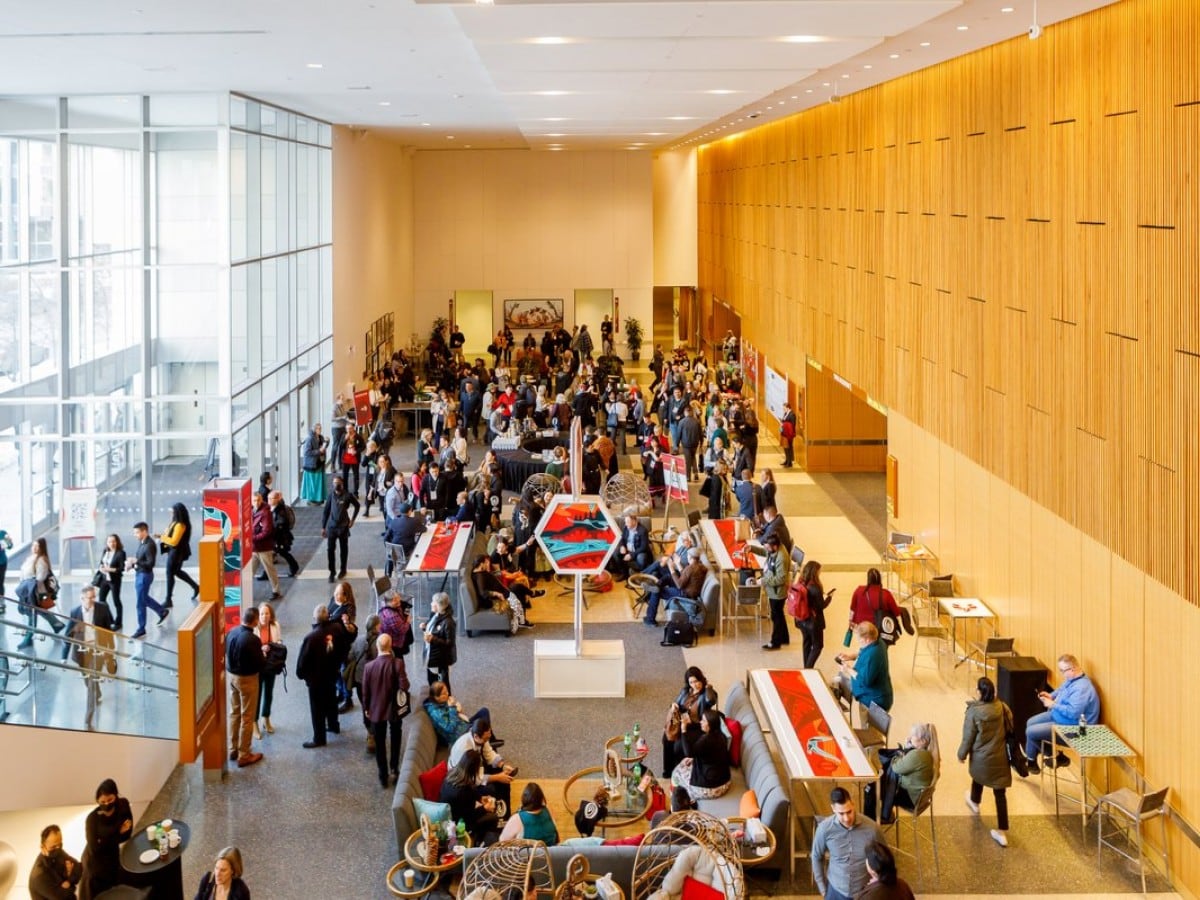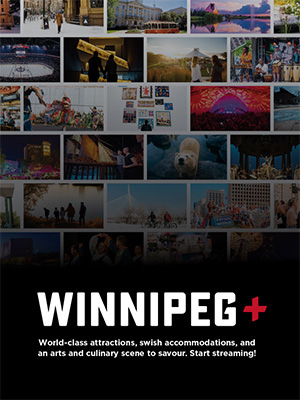To quote the Indigenous Tourism Association of Canada, “Indigenous tourism is reconciliation in action.”
Winnipeg and Manitoba have taken a leading role in the Indigenous tourism-led space, and we are continually investing in Indigenous tourism to the benefit of all Canadians and travellers alike.
Winnipeg is home to Canada’s largest per capita urban Indigenous population, with more than 90,000 people in the city identifying as First Nations, Métis or Inuit. The National Centre for Truth and Reconciliation (NCTR) is located here, providing archives and teachings about Canada’s residential school history, while numerous sites throughout the city mark, teach, celebrate and educate on the history of the region's Indigenous people.
Here's some of the top sites to visit and hold events when you are here for your next business event, along with information on how you can put reconciliation at the forefront of your conference through hiring local talent.
Tap into Winnipeg’s impressive pool of Indigenous talent with the help of Folklorama at Work
Celebrate and support Indigenous talent by bringing Indigenous voices to your conference. Tap into Winnipeg’s impressive pool of Indigenous artists and performers with the help of Folklorama, who can find the right performer, speaker, or Knowledge Keeper to either open your business event with a land acknowledgment or blessing, or entertain your delegates during breaks from your regular programming.
Some of the Indigenous performers in the Folklorama at Work family include:
Shanley Spence is a Nihithaw and Anishinaabe woman who began her hoop dancing career at the age of 13. She has performed at a variety of nationwide and international events, conferences and interactive workshops with groups and independently. While Shanley performs several styles of shawl dancing, she stands out for her talent in competitive hoop dancing, which is typically male-dominated. She has won numerous accolades for her contributions to the community.
The Summer Bear Dance Troupe was spearheaded by married Elders and Knowledge Keepers, Barbara and Clarence Nepinak. The Troupe performs a wide range of dances in typically handmade regalia, all while acknowledging the different regions from where the dances originated. The group offers drumming workshops, storytelling, miniature teepee-making workshops, and hoop dance workshops to promote openness and acceptance. The Summer Bear Dance Troupe is able to provide teachings and cultural awareness, with Barbara continuing (Clarence passed away in 2022) to provide openings, blessings, welcomes and cultural guidance for events as well.
Indigenous cultures and history at unique off-site venues
Manitoba Museum offers programming to support reconciliation efforts and lays a foundation for understanding the history of Indigenous Peoples in Manitoba. The museum provides intensive artifact and exhibit centred tours, self-guided gallery explorations and workshops that explore Indigenous history and expand understanding about the Treaty relationship.
Participants in larger conventions can take in a self-guided, multi-stop gallery experience at their own pace, featuring integrated audio and video content from Indigenous community members.
WAG-Qaumajuq is home to the world's largest collection of contemporary Inuit art, along with an incredible array of Indigenous works in a variety of mediums. Qaumajuq has built on the WAG’s long history of collecting and exhibiting Inuit art, all while working closely with Inuit partners and stakeholders. Its Indigenous Advisory Circle has played a key role in developing Canada’s newest iconic attraction, giving voice to Indigenous people who provide leadership and counsel.
Thematic group tours at WAG-Qauamjuq are available upon request, as are workshops led by Indigenous artists. Its rooftop sculpture garden is one of the city's top event spaces, with 15,000-square feet featuring a stunning selection of 20th and 21st century bronze, steel, and stone sculptures by Inuit, Canadian, and European artists. The gallery itself also features numerous event spaces, including the Learning Steps (Ilipvik Theatre) which provides full audio-visual capabilities and configurable seating to suit event needs. It is an ideal venue for performance-based programming.
The Canadian Museum for Human Rights also provides experiences that deepen delegates’ connections to Indigenous Peoples.
Content about Indigenous rights can be found in every museum gallery. Examples include an original 360-degree film in the beautiful Indigenous Perspectives introductory gallery, which reflects Indigenous Peoples’ views on original rights and responsibilities to humanity and the land. The outdoor Ceremonial Terrace located off this gallery faces the Red River, a site that has been a gathering place for more than 6,000 years.
Delegates can learn more about the tragic story of Indian Residential Schools, presented in multiple ways throughout the museum. This includes a “school room” alcove that examines connections between residential schools, the Sixties Scoop and contemporary child welfare.
Storytelling through Indigenous art includes several major works such as Rebecca Belmore’s “Trace,” comprised of 14,000 hand-pressed clay beads and “Spirit Panels” created by Indigenous artists in each Canadian province and territory with input from Indigenous youth.
Programming can be tailored to your event needs at the CMHR, where your delegates will learn stories of resilience and survival, fostering dialogue that will challenge stereotypes and encourage action for Reconciliation.
Historic Sites
The Forks National Historic Site
As mentioned above, the grounds of The Forks have been a meeting place for Indigenous peoples for more than six millennium. Throughout its grounds you'll find homages to that history, including Niizhoziibean ('two rivers' in Ojibway) –– a new Indigenous-led section of The Forks which honours Winnipeg’s Indigenous history and its place along the Red and Assiniboine Rivers featuring giant works of art, a wigwam, and spaces for ceremony.
Learn about treaties one to 11 at the Agowiidiwinan Centre, which uses artifacts, visuals and interactive tools to detail the complex relations between the Crown and the region's first peoples. The Agowiidiwinan Centre was created by the Treaty Relations Commission of Manitoba, prompted by the Truth and Reconciliation Commission's final report.
The Forks is also a great place to explore Indigenous history by taking part in a walking tour of the area. The newest guided tour, "Where Our Stories Meet" covers the history of First Nations, settlers and Métis Nation in Manitoba. “One Heart, Two Rivers, Four Directions” explores Indigenous connections to The Forks and can be accessed by downloading the Parks Canada National App on Apple or Android devices.
For more treaty history, visit the Lower Fort Garry National Historic site north of Winnipeg, where Treaty No. 1 was signed in 1871.
Located in the middle of the city, Upper Fort Garry Provincial Park depicts the region’s history through a massive Heritage Wall brimming with art, inscriptions and a sound and light show that plays regularly throughout the evening.
Local restaurants & makers
Support local Indigenous-led makers by visiting Cree-Ations Artist Showcase on Main Street where you'll find handmade moccasins, art, beadwork and so much more. Teekca’s Aboriginal Boutique, which offers handmade, Manitoba-made gifts, now has three locations across the city, including a large shop at The Forks Market. Also at The Forks, the new Manitoba Mukluks shop is a real stunner and a great spot to find some of the best footwear made on Turtle Island. In the hip South Osborne neighbourhood you'll find Anne Mulaire, a Winnipeg fashion designer of French-Métis descent committed to fair trade, environmental stewardship and inclusive sizing.
To experience Ojibway, Cree and Métis cuisine, check out our Indigenous Culinary Guide. You'll learn about Métis spots showcasing local suppliers, breakfast through dinner; food trucks that bring more than just bannock; pizza with a northern touch; and why the West End's Feast Cafe Bistro has made owner Christa Bruneau-Guenther a television regular.
Plus, there’s Manoomin, located within the new Wyndham Garden Winnipeg Airport hotel owned by Long Plain First Nation (more on that below). Manoomin means 'wild rice' in Ojibway, and the menu here is by Red Seal chef Jennifer Ballantyne, a member of the Opaskwayak Cree Nation.
Where to stay
You’ll love the soothing Earth-tone colour palette and Indigenous culture embedded from top to bottom at the Wyndham Garden Winnipeg Airport hotel. Owned by Long Plain First Nation, the hotel is located Treaty One Territory on Long Plain Madison Reserve, the city’s first urban reserve.
Run by Sparrow Hotels, the 132-room hotel features a unique curvature not seen in your typical hotel blocks, a reflection of the circle of life. Space for natural light is prominent throughout the hotel which was designed to greet the sun with an east-facing main entrance, a common theme among Indigenous traditions and cultures. Smudging and pipe ceremonies are welcome in the hotel, with spaces built to fire code keeping these important traditions top-of-mind.
The hotel offers bilingual service in English and Ojibway, with way-finding signs throughout. Located in the lobby, Kookum’s Korner is open 24/7, offering beautiful pieces of jewellery and dream catchers for purchase, supporting Long Plains First Nation artists. The well-appointed rooms feature bathrooms with touch mirrors, allowing you to customize the light settings to your needs. The property also has a waterslide and pool area.

